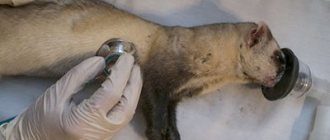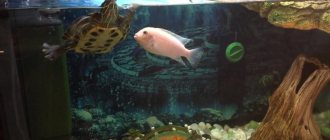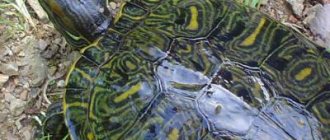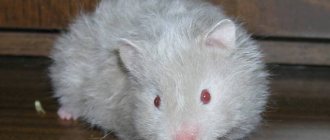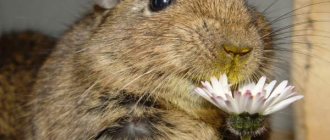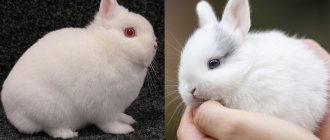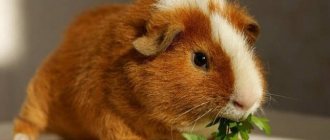The common house (house) mouse belongs to the most widespread species of mammals on the planet, the order of rodents. Due to its attachment to humans, the mouse is distributed on all continents, with the exception of the hot desert territories of Africa and South America, the permafrost of Antarctica, the northern parts of Eurasia and North America. But how long mice live depends on their living conditions and climate.
Interesting!
Such a large population of the house mouse is due to its high fertility and omnivorous nature. But, unlike a rat, a small rodent cannot adapt to a sudden change in environment and does not have strong immunity to toxic substances that people love to poison mice with.
Conditions and life expectancy in the wild
Mice living in the wild spend most of the day in hiding. They are predominantly nocturnal, meaning they move and forage for food at night. Animals have learned to adapt to changing natural conditions; they can endure both summer heat and winter frosts.
Wood mice settle in the roots of trees; tiny baby mice prefer to build a nest in meadow thickets. Many species of wild mice live in burrows, the depth of which reaches half a meter, and sometimes more. The burrows have branches in which mice store food.
Forest mice
The reproductive cycle of small rodents is very fast. A cozy nest is created for the mice, lined with grass and feathers, which the mother drags from the surface into the hole.
The hole can serve as a temporary shelter for a rodent or be a permanent residence with several exits.
The average lifespan of mice away from human habitats is from six months to a year, more is very rare.
On a note! The age of mice when they are already able to have offspring is 2-3 months.
Factors influencing the lifespan of rodents
The lifespan of wild mice is affected by several important points:
- direct enemies: foxes, martens, ferrets, as well as birds of prey - owls, falcons, etc.;
- the spread of pestilent infectious diseases transmitted by parasites;
- climatic and weather conditions, such as drought, flood, winter frosts, which provoke crop failure, reduce the amount of food in the habitat of the animals, and accordingly, their life is shortened due to lack of food;
- excess moisture can cause the spread of mold and disease in the population;
- drought and drying up of water sources can provoke the death of entire colonies of rodents;
- Human activities affect the lives of mice in two ways. On the one hand, it is much easier to get food near human habitation, on the other hand, people strive to protect their supplies and exterminate wild rodents.
General characteristics
A mouse is a small mammal with an elongated body, a pointed muzzle, and large oval ears.
The size of the animal can vary from five to twenty centimeters, the body length depends on the species; large artificial breeds are called decorative breeds.
A distinctive feature of mice is their long flexible tail, which has no hair or is covered with sparse, coarse hair.
The characteristic features of the appearance and structure of mice are called:
- Vision. Animals living in the wild have acute vision, which allows them to see danger even at a great distance. Mice do not perceive blue or green colors, but they distinguish between red and yellow shades. Artificially bred mice with white or other colors have relatively low vision, which is due to the absence of possible risks and external enemies.
- Dental system. A rodent's incisors do not have roots and continue to grow rapidly throughout its life, the average growth rate being from half to one millimeter per day. To prevent excessive growth of the incisors, mice are forced to constantly grind them down.
- Lifestyle. Rodents are characterized by mobility, which is due to the need to maintain a constant body temperature. Active movements help animals not to freeze in the cold season and prevent the body from overheating in the hot summer.
Mice living in the wild store food during the famine cycle, which allows them to avoid starvation.
But if the animals live close to human habitation and have constant access to food sources, there is no need to create pantries.
How long does a decorative mouse live at home?
Decorative mice appeared as human companions relatively recently - about 130 years ago. At the end of the 19th century, with the development of scientific and technological progress, mice began to be used as experimental laboratory animals. Initially, these were ordinary house mice, then breeding work began.
Decorative
Since then, mice have appeared with different color characteristics: plain, white, with spots of different shapes, chinchilla. The structure of the fur of animals can also be different: short, satin, rex (curly), sphinx (bald).
Now clubs and special organizations are engaged in breeding new breeds. The lifespan of mice has increased significantly. The average life expectancy is 3-4 years.
On a note! The first genetic experiments on breeding decorative mice of different colors were carried out in 1909 by the American Clarence K. Little.
How does life expectancy depend on the breed of rodent?
How many years mice live in captivity largely depends on the breed chosen.
- White mouse. Lives on average 3 years, although there are cases where animals lived up to 6.5-7 years.
- The volcano mouse is larger in size than the white mouse and lives in humans for about 5 years.
- The exotic zebra or African striped mouse has a long tail. In captivity, it lives up to 4.5 years.
- Spiny mice or comic mice are strong animals that live with humans for 8 years.
- The tiny mouse weighs only about 7 g. Lives up to 3 years.
- The Fuzz mouse (down rat) lacks guard hair. Does not live with a person for long - up to 2 years.
- The satin mouse has smooth, shiny fur of various colors. Lives in captivity for 2-3 years.
What affects life expectancy?
The lifespan of mice in captivity directly depends on the conditions that the owner provides them:
- the house mouse must live in a suitable microclimate: temperature no higher than +20°C, humidity about 70%;
- absence of drafts;
- direct sunlight, heating the cage, is destructive for small animals;
- the rodent’s habitat must be inaccessible to children and pets (cat, dog);
- For walks, the rodent should choose a place without electrical wires or cracks in which the pet could get stuck;
- mice are omnivores, but in captivity they are deprived of the ability to catch insects, so it is necessary to provide the rodent with proper nutrition, provide it with a balanced diet, and provide the required amount of water and food.
How to extend the life of a house mouse?
Mice at home will live the longest life possible for their species if they are provided with optimal housing parameters.
- Cell. The dimensions of the mouse's home must be at least 30*30*40 cm, the size of the cells is no more than 1x1 cm. The bars of the cage must be iron so that the pet cannot gnaw them and run away.
- Little house. A rodent's cage must have a permanent shelter - a nest, a house. You can buy a special house for the mouse or make it yourself from a box or flower pot.
- Litter. The bottom of the cage should be covered with dry grass and sawdust. The height of the soft layer is 5 cm.
- Cleaning. It is optimal to change the bedding in the cage 2 times a week to avoid the spread of diseases and unpleasant odors. Once a month it is worth carrying out “general” cleaning. Wash all parts of the cage with hot water and soap, wipe with vinegar, or treat with a special commercial cell disinfectant.
- Physical exercise. Sport is beneficial to all living beings. It is worth installing a running wheel in the cage and laying out several toys.
- Balanced diet. The combination of dry and succulent food is the basis of the mouse’s diet. Dry part: seeds, grain, crackers. You can give a special store-bought mixture for rodents. Juicy food: pieces of hard vegetables, fruits, grass, sprouted beans. Be sure to provide vitamin and mineral supplements to the basic diet.
- Communication with your pet. Domestic animals, unlike their wild counterparts, need attention from their owner. You can train the mouse to hold your hands and play with it.
Interesting! Decorative mice are very responsive; without attention, they become withdrawn and run wild.
If poisoned or trapped
People poison rodent pests that regularly appear in the house or try to trap them. If a mouse is caught and survives, then the crippled individual can live like this for another couple of days, squealing heart-rendingly and trying to escape.
Such an animal can be immediately caught and escorted to another habitat . After all, their heart-rending scream will not let anyone sleep peacefully, and as soon as she falls into the trap, everyone will immediately know about it.
Rat poison is another matter. A potent poison that can send an adult to a hospital bed. The animal, absorbing it in microdoses, is able to develop immunity, and soon rat poison will become its usual food.
Immunity will also be passed on in genes to all offspring. Getting a large amount of poison into the body does not always kill the rodent.
If he has immunity from poison, rapid metabolism will remove the poison from the body faster than it harms him. But if the poison turns out to be too strong, the animal dies within 40-80 minutes, depending on the age of the rodent.
How long can a mouse live without food and water?
For domestic decorative mice, the average daily amount of food that they must receive for full functioning has been determined. These numbers differ slightly for different breeds. Water must be present in the drinking bowl at all times.
Metabolic and energy processes in rodents proceed very quickly. To replenish energy reserves, the mouse usually feeds 3-4 times per hour. According to research, a mouse can live without food for up to 10 days. It is much more dangerous for an animal to remain without water. Death from dehydration occurs very quickly. Left without food and water, a mouse will not live even three days.
harmful animal
Small animals cause constant damage to humans. Large populations can greatly spoil food supplies in cellars and warehouses.
But every single rodent also brings trouble to humans. Once settled in a home, the mouse is ready to taste anything. It spoils not only supplies, but also furniture, books, and wallpaper.
Animals carry dangerous infections on their paws and skin. In addition, they leave their feces and urine in the house.
The mouse's desire to live together forces people to come up with ways to get rid of these neighbors. Only the most clumsy animals fall into traps.
To reliably rid the house of the entire community, it is better to use the services of professionals. Special products will help you forget about mice forever.
Nicknames for pets
The new owner has the opportunity to independently come up with a nickname for his animal.
Give the mice nicknames
Below are examples of common mouse names:
For girls: Anfiska, Alsha, Arani, Byuka, Buzka, Viva, Vetta, Zhuli, Zhikharka, Zhuska, Shuga, Shulya, Shanti.
For boys: Arik, Asi, Azar, Ariy, Bely, Stench, Stu, Styopa, Ekor, Eric, Pablo, Ping, Peck.
A mouse in the house as a pet will bring a lot of pleasure to the owner and will look cute, but it is important to be able to properly care for it and provide timely help if necessary.
Diseases
As a rule, the cause of the disease is improper care or genetic predisposition. If there is any suspicious change in your rodent's behavior, you should contact your veterinarian. Obvious signs of illness:
- Changes in the shape of teeth, their unequal length.
- Poor appetite.
- Low activity.
- Eye or nasal discharge.
- Diarrhea.
- Weight loss.
- Change in skin texture.
If the mouse is sick, immediately show it to the veterinarian.
If such signs are present, you must immediately take the animal to the hospital, otherwise it may die.
Habitat
Throughout Russia, Ukraine, Belarus, China, Europe and other countries. They can also be found in China, Mongolia, Denmark, Finland, Korea, and Taiwan. In the Russian Federation, the rodent is distributed in Primorye, Siberia, and the Urals. Prefers hills and mountains. Found near the Black and Azov Seas.
Does not like deserted forest-steppes and continuous forests. It takes root well in moist interfluves. Prefers overgrown meadows, small depressions, collective farm fields, sunny edges of deciduous forests and vegetable gardens. It can be found in greenhouses, greenhouses, cellars, abandoned utility sheds and even in residential premises. With the onset of autumn, rodents move into stacks, haystacks, and stacks of straw.
Harm to summer residents and gardeners, farms
In most cases they destroy agriculture. Moreover, they harm both fields with growing plants and granaries. During mass reproduction, irreparable damage is caused. In winter, field mice live in grain stacks and barns.
In gardens and orchards, tomatoes, watermelons, potatoes, carrots, and sunflowers are damaged. If it gets into the cellar, it completely ruins the preparations for the winter. In spring, they feed on shoots and bark of fruit trees.
These mice are carriers of tick-borne typhus fevers and hemorrhagic nephrosonephritis. They can be causative agents of leptospirosis, tularemia, and various erysipelas. The detection of such diseases in humans leads to death.
What to feed a small rodent
The mouse should receive fresh water every day. The food, as already mentioned, should be renewed five times a day.
Don't forget to feed your pet
The daily norm in products is as follows:
- 6 grams of greens;
- 12 grams of grain;
- 3 grams of succulent feed;
- 3 grams of cereals;
- 0.4 grams of flour;
- 0.1 grams of fish oil;
- 10 grams of milk;
- 0.1 grams of sodium salt;
- 1.8 grams of bread;
- 0.2 grams of feed yeast.
It will be more reliable to purchase food in specialized stores.
Sometimes you can give your mouse vegetables or fruits, but do not overdo it.
If the house is warm enough, the mouse will not hibernate (if it was supposed to hibernate at all). Winter feeding in this case is no different from summer feeding.
Gradually accustom the animal to your hands
In order to put it on your hand, you need to take it by the base of the tail (you cannot take it by the tip) and put it on your hand, constantly holding it, but gently squeezing the tail. Over time, the mouse will get used to your hand. It's dangerous to do this too often.
The first few days after the animal appears in the house, it is in a state of getting used to the place and it is undesirable to touch it during this period.
After the pet is more or less accustomed to the hand and the smell, you can talk to it quietly so that it also picks up the owner’s voice. After some time, you need to give her the opportunity to run around on her own. But the transition to this stage comes later; time and patience are required.
What does it eat?
Domestic mice are rodents, and the basis of their diet should be grains (wheat, millet, barley, rye, etc.). You can also give fruits, berries, vegetables and seeds of wild plants. You can offer your pets sunflower seeds and crackers as treats, but only in small quantities.
Article on the topic: Aquarium ampullaria snails: care and reproduction
Wheat
When thinking through the diet, it is necessary to take into account that mice need to be given additional vitamin and mineral supplements.
You can also feed your pet ready-made food, which contains all the necessary ingredients for a balanced diet.
It is necessary to provide the rodent with branches of garden trees or birch trees for grinding down teeth. Even if you give your pet succulent food, make sure that there is always clean drinking water in the drinking bowl. The domestic white mouse especially needs liquid: even one day spent without water will seriously affect the pet’s well-being.
Interesting Facts
Scientists are constantly working to increase the life expectancy of rodents. Why are they doing that? There is only one goal: to understand the mechanism of aging and find a cure for eternal youth - man has always tried to cheat death in order to live forever! Perhaps getting long-lived mice is the first step towards your cherished dream.
So, in 2005, an unprecedented experiment was conducted at one of the research institutes, which ended in setting a record: their experimental pet managed to live for almost five years! Scientists are in no hurry to share the secrets of their stunning success, and all developments are kept in the strictest confidence.
In turn, Japanese scientists have proven that mice born from two mothers and without the father’s genes in their genetic code live a quarter longer than pets conceived in the traditional way. The experiment not only proves that reproduction is possible without the participation of males, but also makes it possible to see firsthand that male genes accelerate the aging process of the body.
There is a downside to this study:
- the experimental animals did not reach normal sizes - they were significantly smaller than ordinary pets;
- but their immune system was more active, and the animals were in better health.
